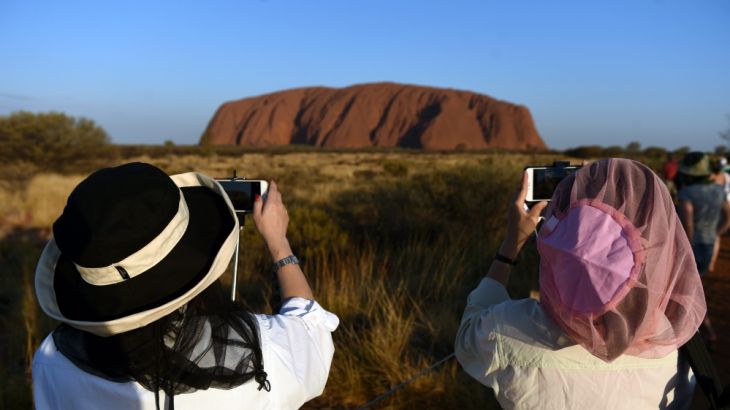Uluru climbing controversy and Aboriginal sensitivities
Ban on filming people climbing sacred rock formation highlights difficulties of covering indigenous issues in Australia.

It’s always tricky making television reports when you’re not able to film the activity that’s at the heart of your piece.
Mine was about the cultural insensitivity – the “insulting disrespect” one person told me – that tourists display when they climb Uluru, also known as Ayers Rock. In indigenous culture, it’s sacred. It shouldn’t be climbed.
But – apparently – filming people on the rock is taboo too. So, though nearly 20 percent of visitors still do climb, we were asked not to film them doing so.
And we had a “minder” – a “communications ranger” from Parks Australia, which manages the site – with us too to make sure we didn’t. Miranda – though helpful – was checking each shot as we filmed.
It’s not as though we were trying to cheat. If what we broadcast was disrespectful, it would make a mockery of the report. We’d be hypocrites featuring criticism of those who climb. So we decided to get creative: the climb route, without climbers; would-be climbers before they began an ascent.
‘Biggest taboos’
It illustrates the difficulties of shooting stories about indigenous issues in Australia. There are immense cultural sensitivities. Certain rocks formations can’t be filmed if there’s a mythical story attached to how they came about. There has to be formal, negotiated permission to go into indigenous communities – like Mutijulu at the foot of Uluru, where we could only shoot what our minder allowed. And only certain people can give interviews; attention–seeking in the local Anangu culture, we were told, is the biggest of taboos.
Uluru is in a national park so, without deceit, we had to play by Parks Australia’s rules. And we got the stories we wanted. But it’s never simple filming with indigenous Australians.
Nor, mind you, is it simple for indigenous Australians to overcome the much bigger issues they face.
Perhaps all I was getting was a tiny taste of what it’s like for cultural differences to make everything more of a struggle.
And, actually, the ban on filming people on Uluru got us out of a hole. On the two mornings we arrived to film, potentially dangerous weather conditions meant even those who wanted to were prevented from going up on the rock.
Those mornings, there was no one climbing… who we wouldn’t be allowed to film.